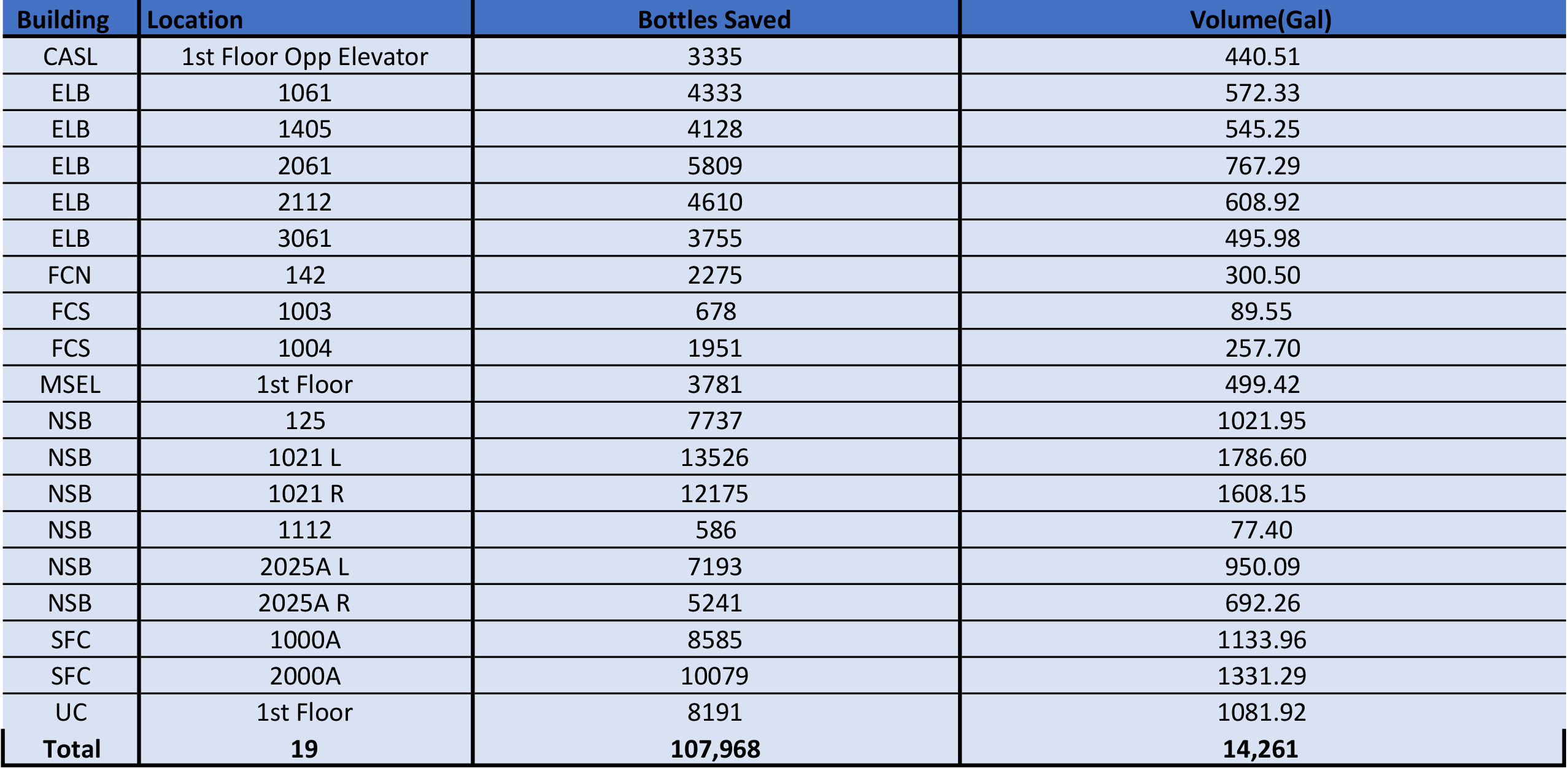
UM-Dearborn started installing water bottle filling stations in 2020 to allow folks who were using reusable water bottles to easily fill up on campus. We now have a total of 19 across eight buildings, including four new ones that were installed this year. Using a reusable water bottle instead of disposable single-use plastic water bottles is a great idea for many reasons, says Shreyas Ambar Ramprasad, a member of the Campus Sustainability & Energy Team and organizer for the Planet Blue Ambassador program. First, a 16 oz. bottle of water will cost you at least a buck. Tapping into one of our filling stations won't cost you anything, and our water on campus is tested regularly for safety, so it’s just as good as bottled water. In fact, you might be surprised to learn that a lot of bottled water is actually just tap water.
In terms of sustainability, cutting out single-use plastic also saves a lot of energy and resources. For starters, plastic is made from fossil fuels, and it also takes energy to manufacture and recycle it. Plus, even if you throw your plastic bottle in the recycling bin, there’s a good chance it won’t get recycled because of a myriad of practical problems with plastic recycling. Ramprasad says some of the numbers are pretty shocking.
-
4 oz.: The amount of oil it takes to produce the plastic for just one 16 oz. single-use bottle of water.
-
2X: The amount of water needed to manufacture a plastic bottle is twice the volume of water that eventually fills it.
-
5%: The amount of post-consumer plastic waste that was recycled in the U.S. in 2021
-
20-70%: The amount of plastic that experts think is entering recycling facilities around the globe that is discarded because it is unrecyclable. Much of this ends up in the ocean.
-
450: The number of years it takes PET bottles to decompose in a landfill.
-
35 billion: The number of empty water bottles that are thrown out each year in the U.S.
-
200: Bottled water is 200 times more expensive to produce than the tap water that comes out of our filling stations.
One of the other cool things about our bottle filling stations is they actually track how much water they’re dispensing. Below, you'll see the cumulative numbers as of October 2022. To date, all the filling stations combined have dispensed 14,261 gallons, displacing 107,968 16 oz. plastic bottles, and saving the equivalent of 19,661 pounds of CO2.

You’ll notice that the filling stations in the Natural Sciences Building and Science Faculty Center are logging a lot more use. That’s mainly because those filling stations were installed a few years ago. The ones in Fairlane Center, the UC and ELB were installed earlier this year, though you’ll see the filling stations in the ELB are already getting used a lot. Good on you, CECS students, staff and faculty!
So if the filling stations are getting so much use, why don’t we have even more of them? The main reason is they aren’t cheap: Each one costs about $2,500 to install. UM-Dearborn does hope to keep installing filling stations across campus in the coming years, as budgets allow.
###
Story by Lou Blouin


